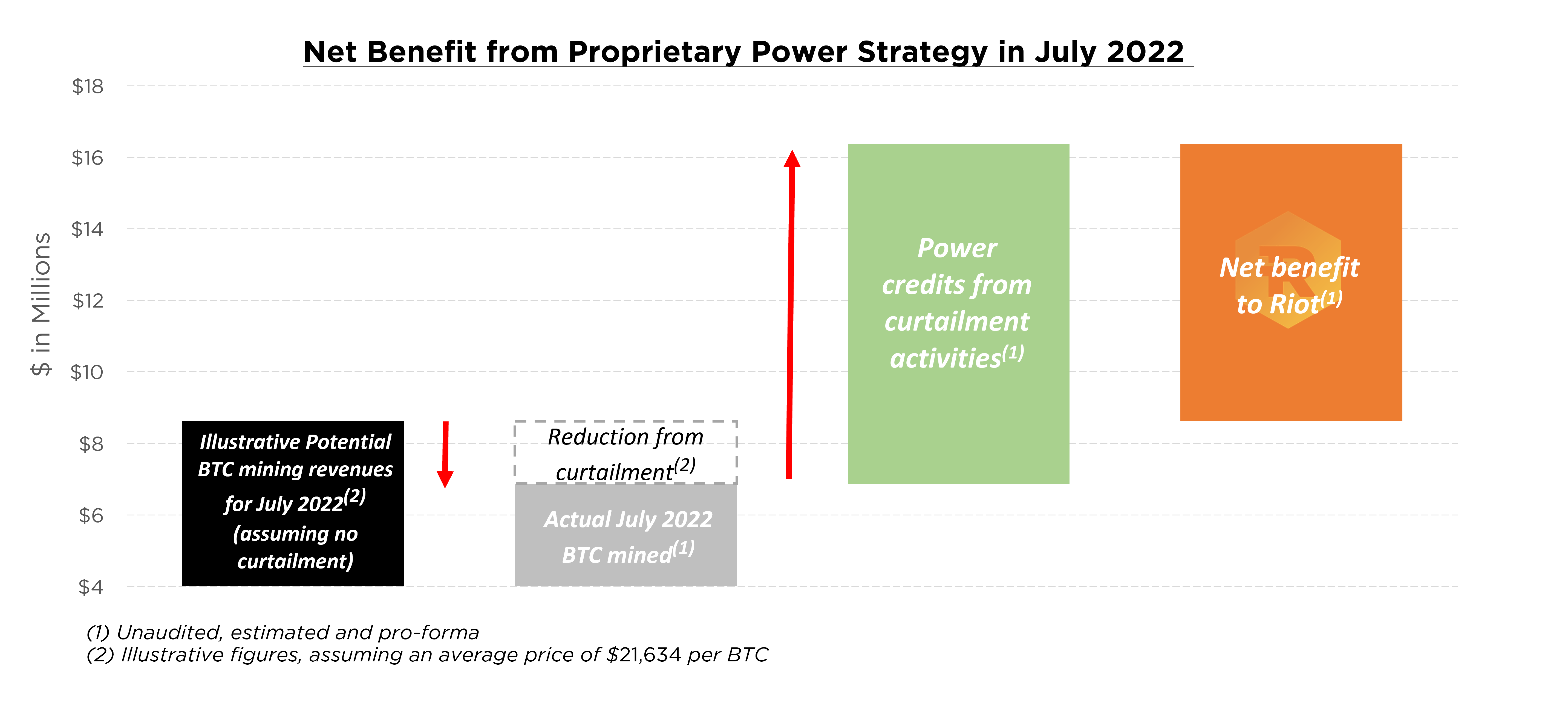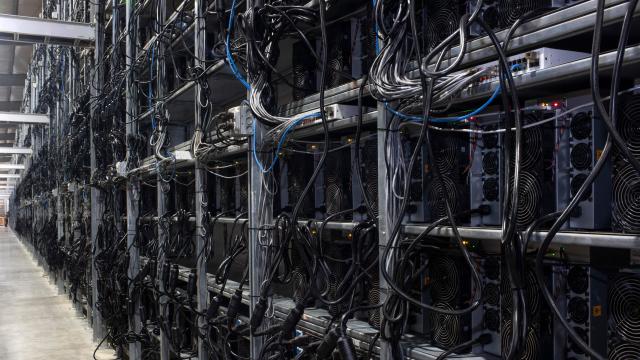At least one big bitcoin mining operation in Texas that was not actually mining much bitcoin during this season’s record-breaking heat netted millions of dollars in profits — more than they would have if they just kept on mining without any shutdowns. It’s thanks to power purchase agreements signed with the local grid, allowing them to sell electricity they purchased earlier back to the provider for a tidy sum.
Riot Blockchain itself announced it had made an estimated $US9.5 ($13) million in power credits thanks to the multiple times it shut down its mining rigs. This was even more than the amount the company gained in selling bitcoin that month. The company’s page said it sold 275 bitcoin, with net proceeds equalling just $US5.6 ($8) million. This is compared to last year when the company said it produced 444 bitcoin, worth approximately $US16 ($22) million just before the price of BTC really spiked toward the tail end of 2021.
This net profit has proved that even despite the downturn in the crypto market and disruptions to mining operations, these companies are still set on their path to keep on keeping on with their incredibly power-hungry operations. Digiconomist’s bitcoin energy graph shows that kilowatt hours per year peaked in the beginning of June but then tanked throughout June/July. That line’s starting to inch up once again, and even at its depleted state it’s still way above U.S. bitcoin energy consumption back in March, 2021.

The Electric Reliability Council of Texas — AKA ERCOT — had asked businesses to routinely power down in order to conserve electricity throughout July. Riot and its massive 750-megawatt bitcoin mining facility in Rockdale, Texas reduced power multiple times during times of peak demand. Of course, many of the dozens of large-scale bitcoin mining operations also cut activity during the past month to not over-stress the often overtaxed grid, but Riot remains the largest token miner in the Lone Star State.
The amount of bitcoin produced during this past month was 318, 28% less than the same month last year. While the companies did publicly agree to shutdowns in order to preserve the grid, they were also avoiding scaling electricity prices during peak loads.
ERCOT provides power purchase agreements that are usually termed for one year, but Lee Bratcher, the president of the Texas Blockchain Council, told Gizmodo in a phone interview that only a handful of the biggest bitcoin miners actually have these PPAs. The ones that do, like Riot, can take advantage of the need to curtail power, while other miners simply have to make do.
The Texas Blockchain Council networks and promotes the many crypto mining operations in the state. Bratcher called these PPAs “a good deal” for ERCOT, since it can regain the power needed for the rest of its grid during peak times.
At the same time, the massive draw of these mining operations is only expected to increase. Texas’ grid system has said that Texas crypto miners will put a six gigawatt-demand on the grid by next year. Congressional Democrats have warned the seven largest mining rigs in the U.S. draw power equivalent to all the residential homes in the city of Houston. These crypto miners are only expected to get bigger over time.
Bratcher said most of the Texas mining operations voluntarily shut down operations once the local price of power on ERCOT’s grid broke above $US180 ($250) or higher per megawatt hour, which would basically incur a net-negative cost to mine their bitcoin. Shutting down basically made costs and revenue zero out, but the lost opportunity cost for many of these companies was in the hundreds of thousands or even millions, depending on the fluctuating price of crypto versus the overall cost of power.
So will this happen again? After all, the National Oceanic and Atmospheric Administration is anticipating more above average heat in August. Texas is one of the most likely places where temperatures could spike above historical averages, including heat in the triple digits. In the release, Riot’s CEO Jason Les said his company “has consistently and proactively pursued low-cost, large-scale access to power under its long-term fixed rate power contracts.”
Bratcher said that most of these agreements will essentially allow companies like Riot to continue selling back unused power if power demand increases to a point it makes sense to shut down. So even if we get even more extreme heat (which climate scientists have said is increasingly likely) that won’t necessarily stop the crypto miners from digging for digital gold.
